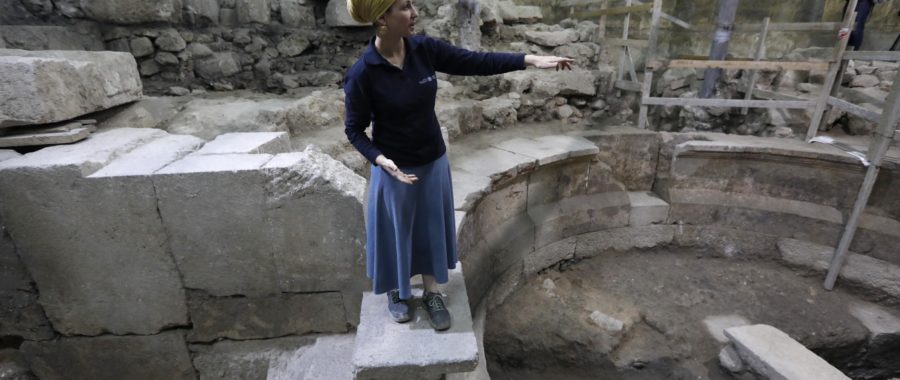
epa06268680 Israeli archaeologists Tehillah Lieberman of the Israel Antiquities Authority speaks to members of the media inside an ancient Roman amphitheater discovered at the Western Wall Tunnels in Jerusalem’s Old City, 16 October 2017. The Israeli Antiquities Authority revealed the ancient amphitheater from the late Roman period and eight stones of the Western Wall that were buried under eight meters of earth. EPA/ABIR SULTAN Dostawca: PAP/EPA.
Izrael: odkryto ruiny rzymskiego amfiteatru [GALERIA]
Mały, w połowie zbudowany i pokryty dachem rzymski amfiteatr z II w. n.e. odkryto w trakcie prac archeologicznych prowadzonych pod Zachodnim Murem w Jerozolimie. Izraelscy archeolodzy poinformowali w poniedziałek agencję Reutera, że jest to pierwsze tego typu znalezisko w mieście.
Jak podała w poniedziałek agencja, zaplanowaną na dwieście miejsc, kamienną budowlę odkryto podczas wykopalisk prowadzonych poniżej korytarza przy Zachodnim Murze, który prowadził do żydowskiej Świątyni.
Zdaniem izraelskich władz archeologicznych, pierwotnie budowla przeznaczona była na miejsce widowisk muzycznych oraz spotkań rady miejskiej – i była nazywana buleuterionem.
„Po raz pierwszy odsłonięto w Jerozolimie budowlę o strukturze teatralnej – i jest to niezwykle pasjonujące” – powiedział agencji Reutera przedstawiciel izraelskich władz archeologicznych Joe Uziel. Jego zdaniem, „tak zaprojektowana budowla przypomina te, które wykorzystywano w czasach Jezusa”.
- epa06268679 Israeli archaeologist Dr. Joe Uziel of the Israel Antiquities Authority speaks to members of the media inside an ancient Roman amphitheater discovered at the Western Wall Tunnels in Jerusalem’s Old City, 16 October 2017. The Israeli Antiquities Authority revealed the ancient amphitheater from the late Roman period and eight stones of the Western Wall that were buried under eight meters of earth. EPA/ABIR SULTAN Dostawca: PAP/EPA.
- epa06268683 Israeli archaeologists Tehillah Lieberman of the Israel Antiquities Authority speaks to members of the media about Western Wall stones discovered at the Western Wall Tunnels in Jerusalem’s Old City, 16 October 2017. The Israeli Antiquities Authority revealed an ancient amphitheater from the late Roman period and eight stones of the Western Wall that were buried under eight meters of earth. EPA/ABIR SULTAN Dostawca: PAP/EPA.
- epa06268689 Israeli archaeologists Tehillah Lieberman of the Israel Antiquities Authority speaks to members of the media inside an ancient Roman amphitheater discovered at the Western Wall Tunnels in Jerusalem’s Old City, 16 October 2017. The Israeli Antiquities Authority revealed the ancient amphitheater from the late Roman period and eight stones of the Western Wall that were buried under eight meters of earth. EPA/ABIR SULTAN Dostawca: PAP/EPA.
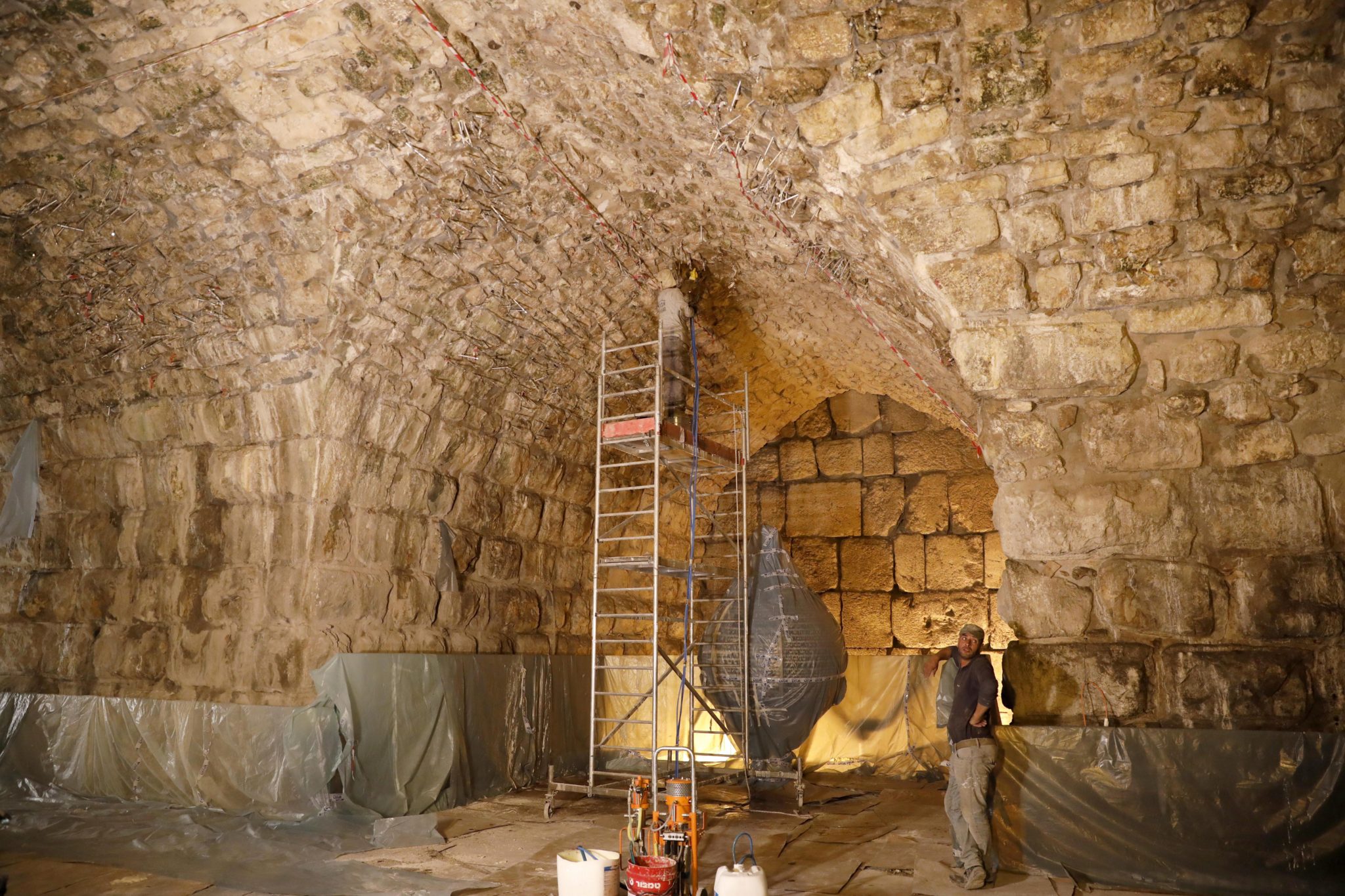
W opinii władz izraelskich, prace nad amfiteatrem mogły zostać przerwane w II w. n.e. w wyniku żydowskiego powstania przeciw rzymskiemu panowaniu.
Znalezisko przylega do miejsca określanego przez Żydów mianem Wzgórza Świątynnego – a przez muzułmanów traktowanym jako miejsce święte, na którym zbudowano meczet Al-Aksa. (zdjęcia: Abir Sultan, PAP/EPA)









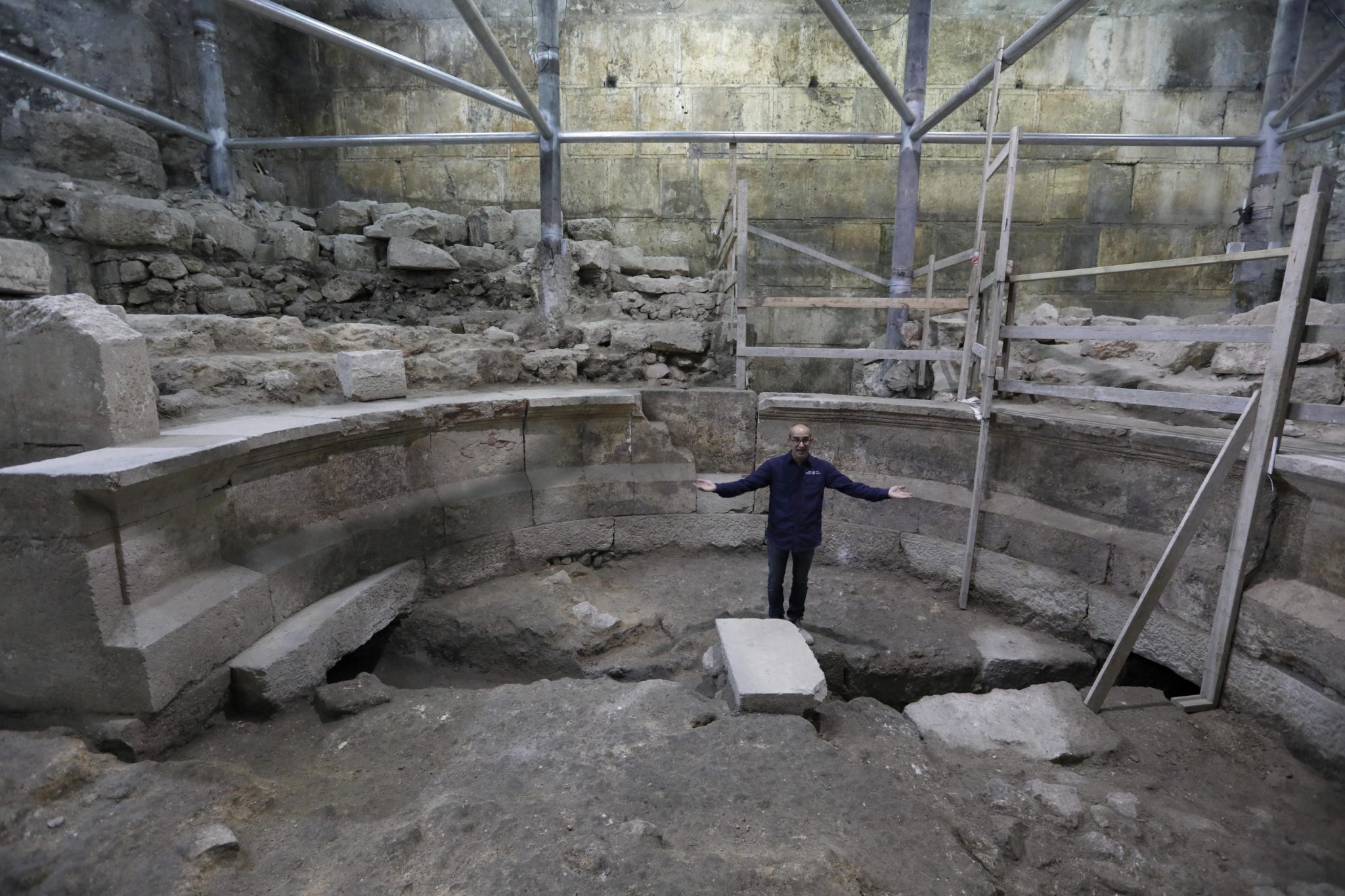
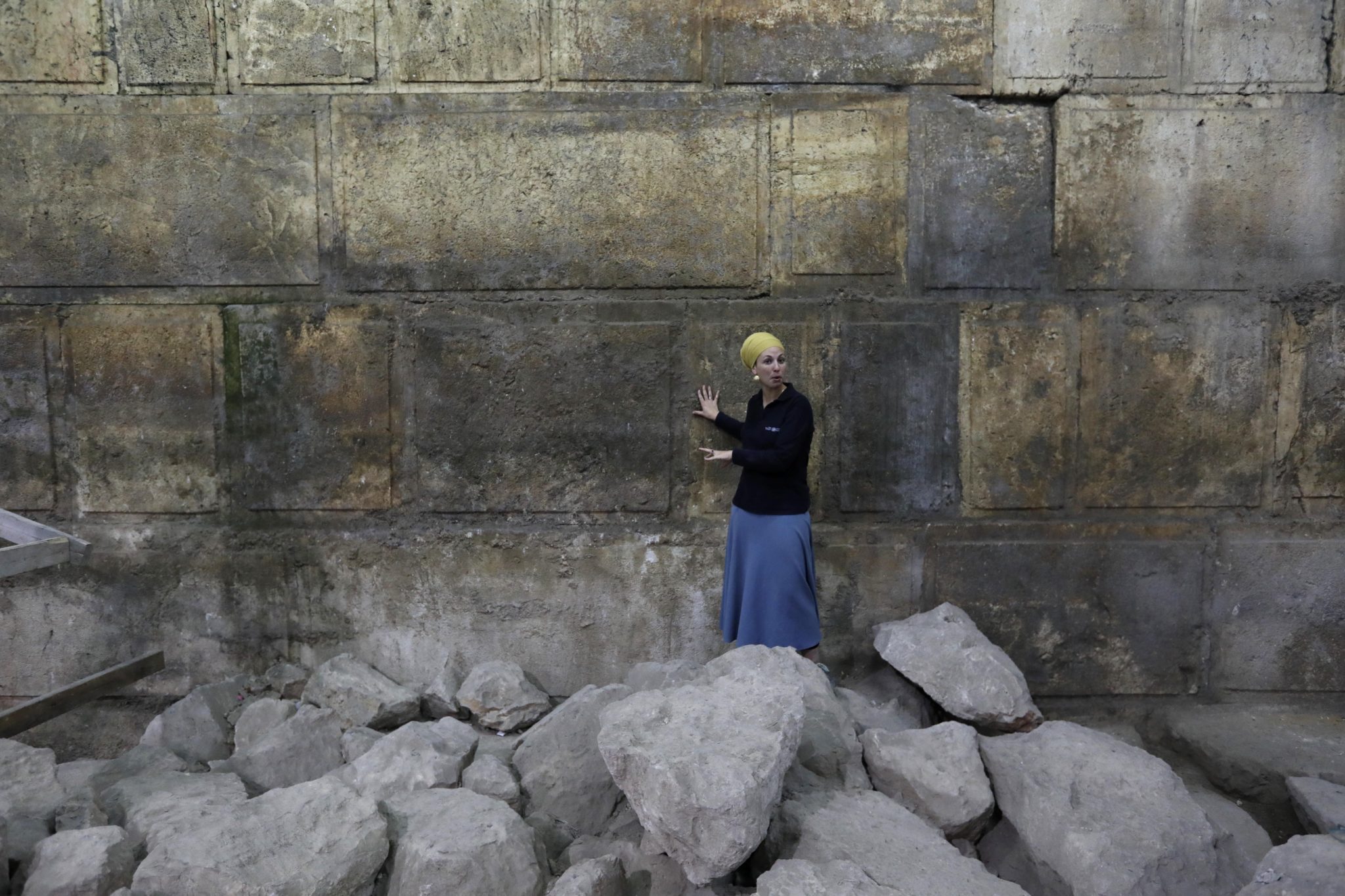
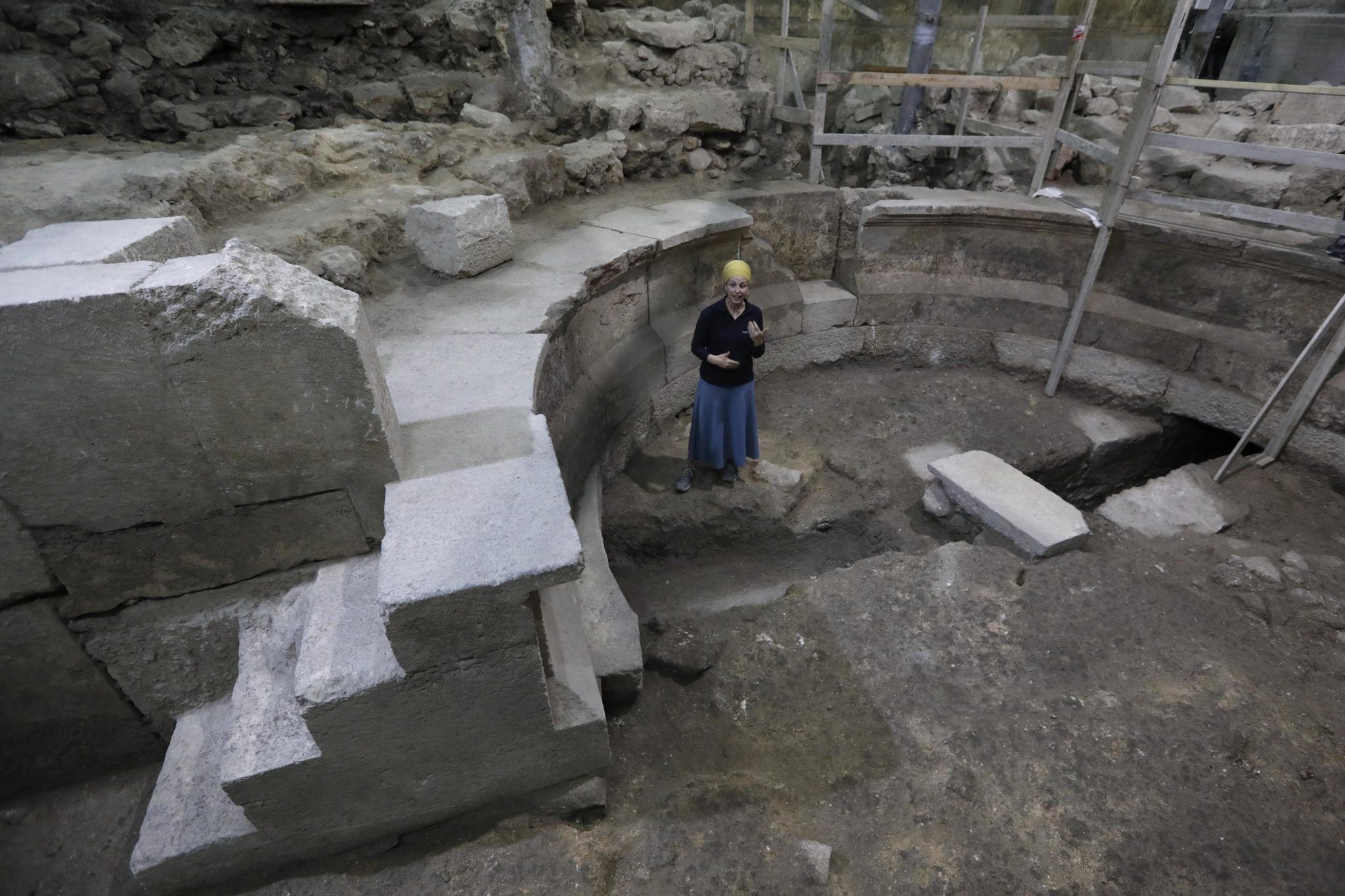















 Wiadomości
Wiadomości Wideo
Wideo Modlitwy
Modlitwy Sklep
Sklep Kalendarz liturgiczny
Kalendarz liturgiczny